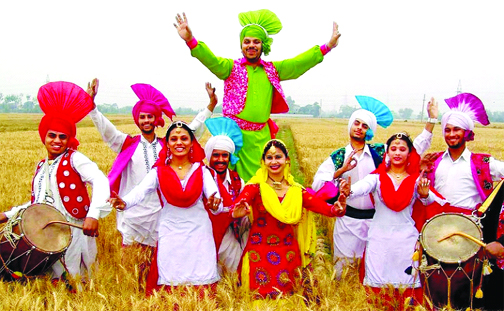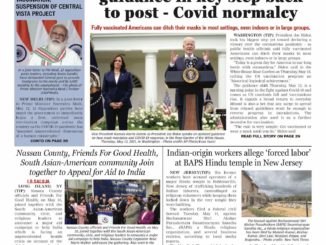
Vaisakhi, also spelled Baisakhi, is one of the most important dates in the Sikh calendar. It will be celebrated on April 14 this year. It also commemorates 1699, the year Sikhism was born
In Punjab and Haryana, Vaisakhi or Baisakhi festival is celebrated with great delight and zeal. This celebration is very important to farmers because it signifies the beginning of harvest season (Rabi crop).
What is the significance of the Baisakhi festival?
It is on this day (in 1699) that the tenth Guru, Gobind Singh Ji, laid the foundation of the Khalsa Panth, which is why Baisakhi or Vaisakhi is celebrated with great reverence by Sikhs. It is also known as the Sikh New Year’s celebration. In 1699, Guru Gobind Singh Ji, the then tenth Sikh Guru, held the Baisakhi celebrations that resulted in the formation of the Khalsa (to be pure, to be clear, to be free from). Guru Gobind Singh Ji, widely known as the “Final Living Guru of Sikhism,”. In conjunction with the foundation of the Khalsa, an army was organised to battle against the faults of society as well as the Mughal Emperors and their armies.
Today, Vaisakhi is celebrated by people from all walks of life, not just Sikhs and Punjabis. It’s called “Khalsa Sirjana Diwas,” or “the birth of khalsa.” Punjabis and Sikhs celebrate Baisakhi in different ways, and many of them do so in their own way. These are not the same as the harvest festivals in the villages. Baisakhi isn’t just a celebration for people in rural areas anymore. It’s also a celebration for people in cities and towns.
On this day, Sikhs remember their 10th guru, Guru Gobind Singh. On this same day, he set up the order of the Khalsa and gave it a new push. There are many places in India where people can get baptised on this day because it is a good time. As far as tradition goes, it varies from one family to the next. Some food is given out along the way. Then, there is more food, like kadah and langar, and the path ends.
How is Vaisakhi festival celebrated ?
People in the villages of Punjab really have a good time when the crops are harvested. In Anandpur Sahib, the birthplace of the Khalsa, a lot of people come together for Vaisakhi meals. In cities, people go to gurdwaras with their families, and they do it all the time. Only Sikhs go to the gurudwaras with their families and friends to take holy baths and enjoy the food. People from other religions also go there to do the same.
On this day the gurudwaras are illuminated and there is a 48-hour akhand path and bhog. The day is usually marked with kirtan, kadah, prasad and langar. Womenfolk prefer to dress up in white suits with orange dupatta on this day while going to the gurdwara.
As a celebration of the festival, Sikhs travel and bathe in lakes or rivers before going to their local Gurdwaras. Community fairs, nagar kirtan procession events, and gatherings to mingle and eat celebratory meals are also held on the day. When it comes to Hindus, this is a chance to take a dip in sacred rivers like the Ganges or the Jhelum or the Kaveri, go to temples, meet friends, and eat and drink traditional foods and drinks.
Sikhs go to Nagar Kirtans and pay their respects to the Khalsa on the eve of Baisakhi. There are many other things that happen during the festival. They read religious songs, sing, and pay homage to the Guru Granth Sahib (the Sikhs’ holy book).
On this day, there will also be dance shows, like Bhangra and Gidda, that you can enjoy. People come in their best clothes and share sweets to remember the event. Aside from the events listed above, fairs are also held on this day to promote local businesses. Children and teens demonstrate their martial arts talents in the presence of drummers and musicians, while men wield swords, all of which add to the excitement of the event.
Vaisakhi Fairs
Coloufl Vaisakhi Fairs are organized at several places in Punjab to mark the harvest festival of Vaisakhi. Performance of bhangra and gidda dance besides other recreational activities make Vaisakhi melas a major crowd puller. People also indulge in shopping and eating spree in the numerous stalls set up in the fairs.
The Sikhs observe Vaisakhi by taking a dip in the sacred river and visiting the Gurudwaras, where they participate in daily prayers. Everyone becomes merry during Baisakhi; many like getting up and dancing all night. At the Talwandi Sabo, where Guru Gobind Singh revised the revered Granth Sahib, the Gurudwara at Anandpur Sahib, the location of Khalsa’s birth, and the Golden Temple in Amritsar, special celebrations are held. Farmers pray for success in the upcoming year and thank God for the abundant crop. Joyful farmers shout “Jatta Aayi Baisakhi” across the fields as they joyfully dance in celebration, a thrilling way to welcome the holiday. The Karah Prasad is offered to the guru following the prayers or Ardas and then given out to the populace. Following this, there is a special guru-ka-langur or community lunch at the Gurudwaras, after which the Nagar Kirtan procession is held through the streets. All sing devotional songs in honor of this holy observance. Partygoers take the celebration to heart with an enthusiastic and vivacious display of song and dance while wearing the brightest clothing.
Vaisakhi marks spring’s beginning when men, women, and children buy new clothes to mark the event. They choose the most vibrant and dynamic of the bunch to express the cheerful mood that permeates the throng. Men in traditional Punjabi clothing typically wear a turban with a fan-like ornament, a waistcoat, a scarf, and a lungi knotted around their waist. At the same time, women typically dress in salwar kameez and accessorize with the most festive and flashy jewelry. This outfit’s multicolored brilliance captures the vivacious and upbeat character of the Punjabi way of life.
Processions
The Nagar Kirtan commonly referred to as the Vaisakhi Procession, is a significant component of the festivities in Punjab. The Panj Piaras, commonly known as the five senior religious Sikhs and a significant element of the Khals traditions, carry out the most sacred text Granth Sahib with honor. With music, singing, hymns, and scripture chanting, Baisakhi processions march through the city’s streets and alleyways. The Baisakhi processions attract a lot of worshippers. Children and young people show off their martial arts prowess during the Baisakhi processions, and the occasion is made more colorful by the drummers, bands, and men wielding swords. Overall, it’s reasonable to conclude that the festival of Baisakhi ushers in a new chapter in people’s lives each year.





Be the first to comment